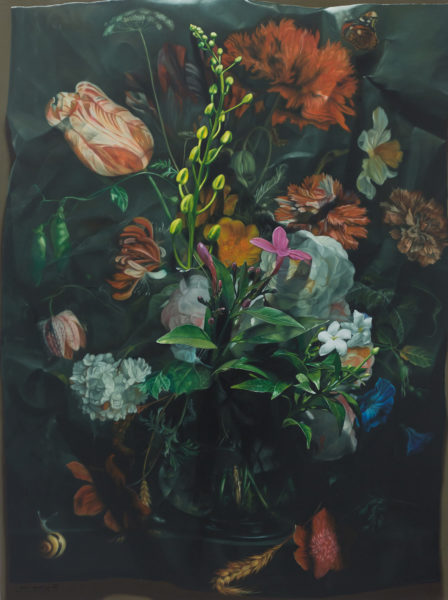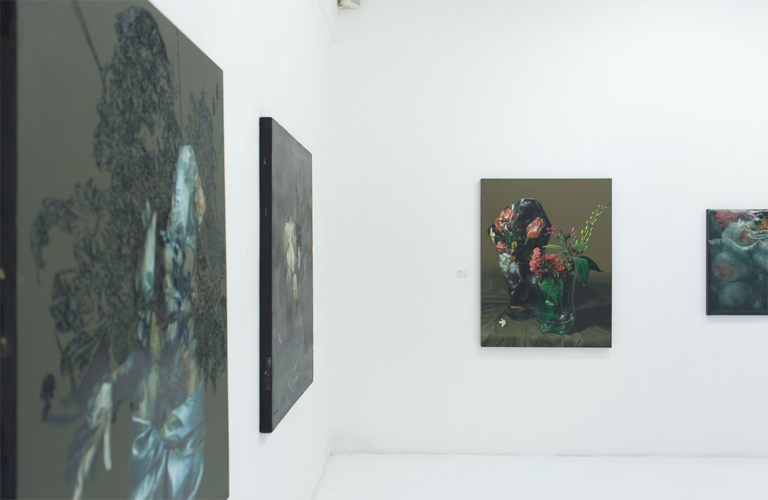
Halimuyak (Filipino for “fragrance”) by Anton Mallari carries with it the imagined scent of old petals pressed in between the pages of a book, the subtle sillage of half-remembered tales in the corridors of memory. Romance and nostalgia linger in the flowers that grace this exhibition, which is divided into three series.
Pammati (Beliefs), with its buds and bursts of color emerging from the lithe forms of women, recall numerous origin myths common across cultures: of beings—whether mortals or gods—transforming or being transformed into flowers. The reasons are myriad: escape from the wrath of a spurned deity; punishment for hubris; commemoration of tragic love; or tribute paid in death. Mallari finds metamorphosis—and the larger idea of reincarnating as flora or fauna—fascinating. He ponders the possibilities in three canvases in a state of flux, caught in the in-between, paused as it were at the crucial moment of mutation.
Ad Adal (Lessons), a much more domestic and down-to-earth series, revolves around the symbolism of flowers and the roles they play in celebrating milestones. Flowers are strewn all over the journey of life, from the day we are born to the day we die. They mark baptisms, birthdays, graduations, weddings, and funerals and are usually accompanied by wise missives that remind recipients of the attendant lessons associated with each event. The still life paintings in Ad Adal are familiar sights: blooms steeped in makeshift vases and crumpled magazine pages serving as improvisational tissue wraps—all of them rendered in vivid color.
Amianan Abagatan (North South) speaks of Mallari’s roots through portraits of Ifugao women superimposed with bouquets. What differentiates this series from Pammati is the presence of local signifiers, notably the pangalapang, the mother-of-pearl necklace that, among the Ifugao, is a sign of status. Wrapped in this series are Mallari’s current preoccupations about his heritage, the environment, and indigenous culture.
Coded in the flowers of Halimuyak themselves are messages that can be deciphered by those fluent in the language of their type and color. — ll
Works

AMIANAN ABAGATAN (NORTH SOUTH) SERIES 3

AMIANAN ABAGATAN (NORTH SOUTH) SERIES 1

AMIANAN ABAGATAN (NORTH SOUTH) SERIES 2

PAMMATI (BELIEFS) SERIES 1

PAMMATI (BELIEFS) SERIES 2

PAMMATI (BELIEFS) SERIES 3

AD ADAL (LESSONS) SERIES 1

AD ADAL (LESSONS) SERIES 3

AD ADAL (LESSONS) SERIES 2
Documentation




